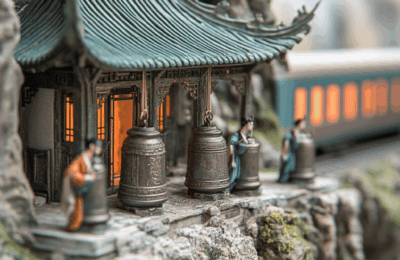《乐动楚风》|青铜编钟 · 汉十高铁 · 武汉 – 随州
《乐动楚风》是一段穿越2400年的文化回响,也是一场古今中国的文明对话。文章以随州出土的曾侯乙编钟为起点,这套被誉为“金声玉振”的青铜礼乐重器,不仅是先秦音乐技术的巅峰,更是中华礼乐制度的声音化表达。它所铭刻的3755字乐律铭文,被联合国列入《世界记忆名录》,见证了中国古代节奏之精密。当汉十高铁疾驰而来,从武汉的长江涛声到随州的钟鸣,一场来自地下与地表、青铜与钢铁的双重奏悄然展开。高铁代表的是现代中国的速度与脉搏,编钟代表的是古代中国的节奏与秩序。两者在随州交汇,奏响的不仅是城市的过去与未来,更是中国文化在时空中的自省与奔赴。Resounding Chu is a cultural echo spanning 2,400 years—and a dialogue between ancient and modern China. The journey begins with the Zeng Hou Yi bianzhong unearthed in Suizhou: a bronze ritual-and-musical masterpiece famed as “golden sound and jade resonance.” It marks the pinnacle of pre-Qin musical technology and gives audible form to the rites-and-music order of Chinese civilization. Its 3,755-character inscription on pitch and scale—inscribed by UNESCO on the Memory of the World Register—attests to the astonishing precision of ancient Chinese rhythm. As the Wuhan–Shiyan high-speed rail hurtles into motion, from the Yangtze’s surge in Wuhan to the bell-tones of Suizhou, a quiet duet unfolds between earth and surface, bronze and steel. The railway embodies the velocity and pulse of contemporary China; the chime-bells, the rhythm and order of antiquity. Converging in Suizhou, they sound not only a city’s past and future, but China’s self-reflection—and its onward journey—across time and space.

